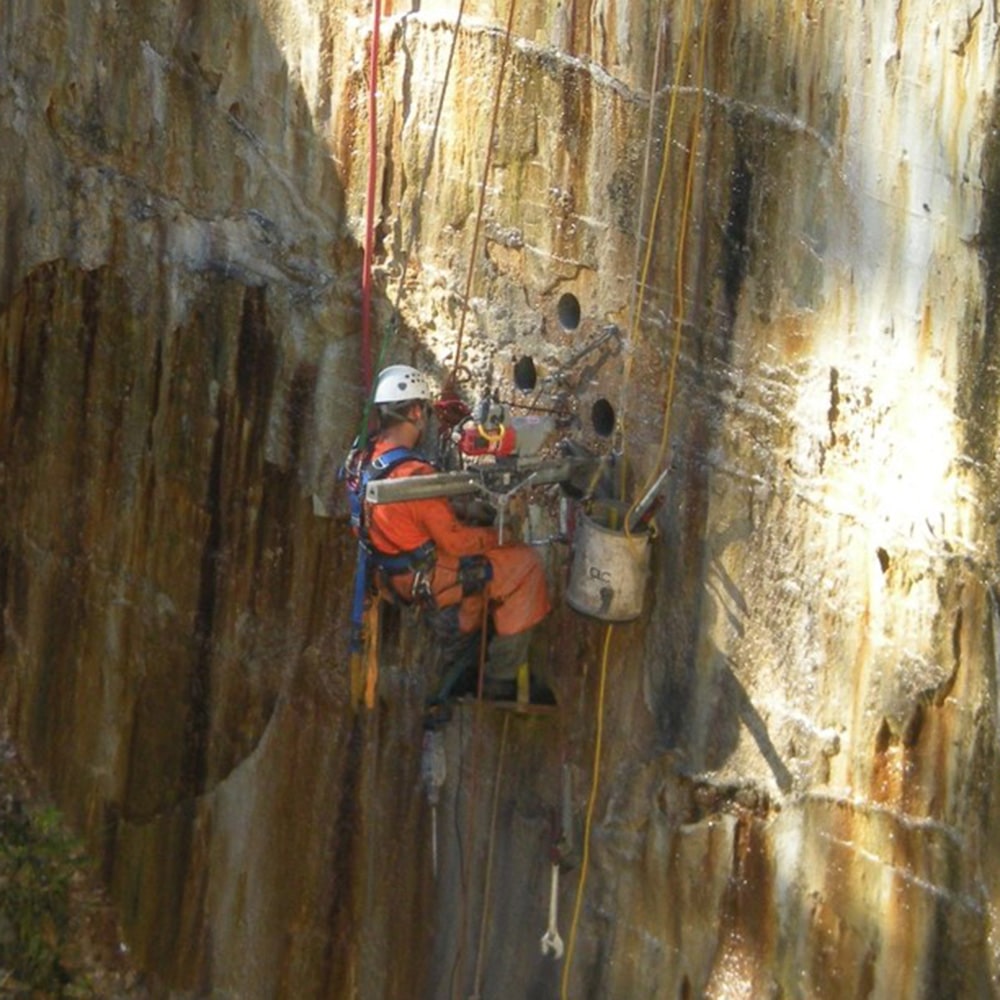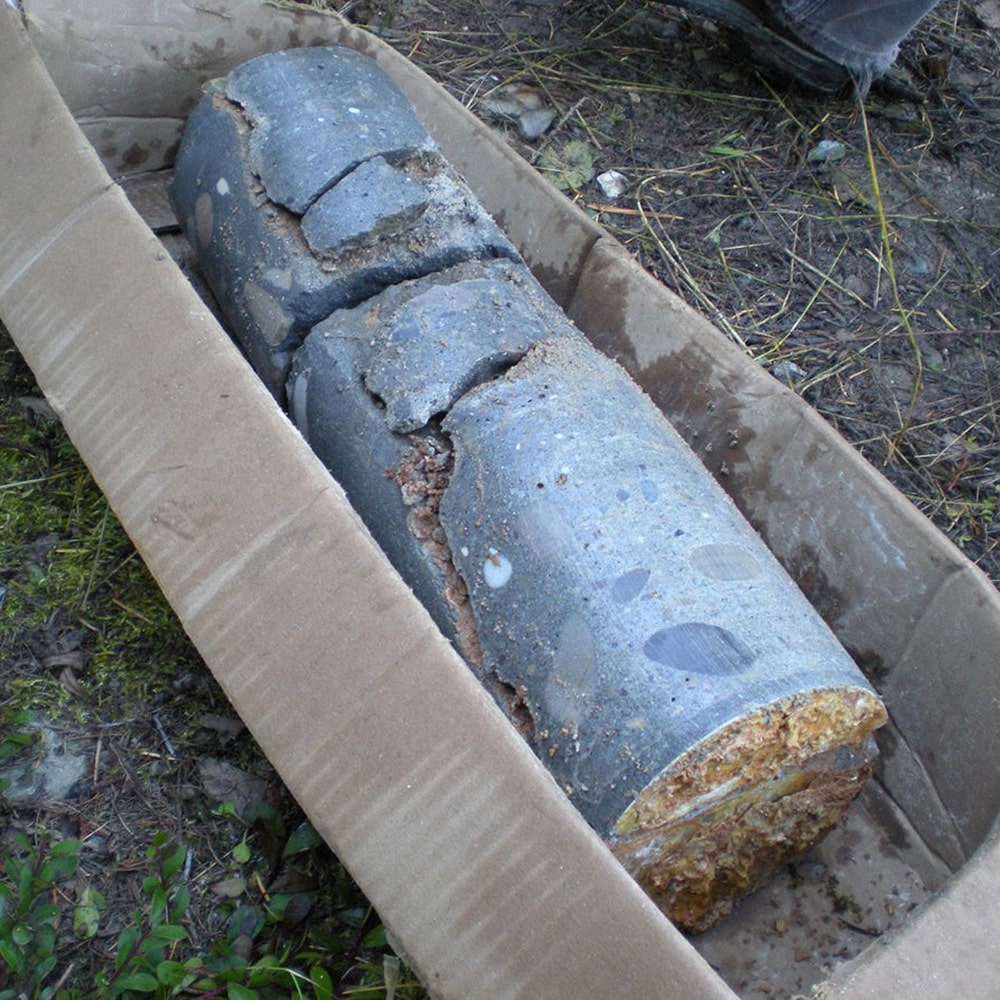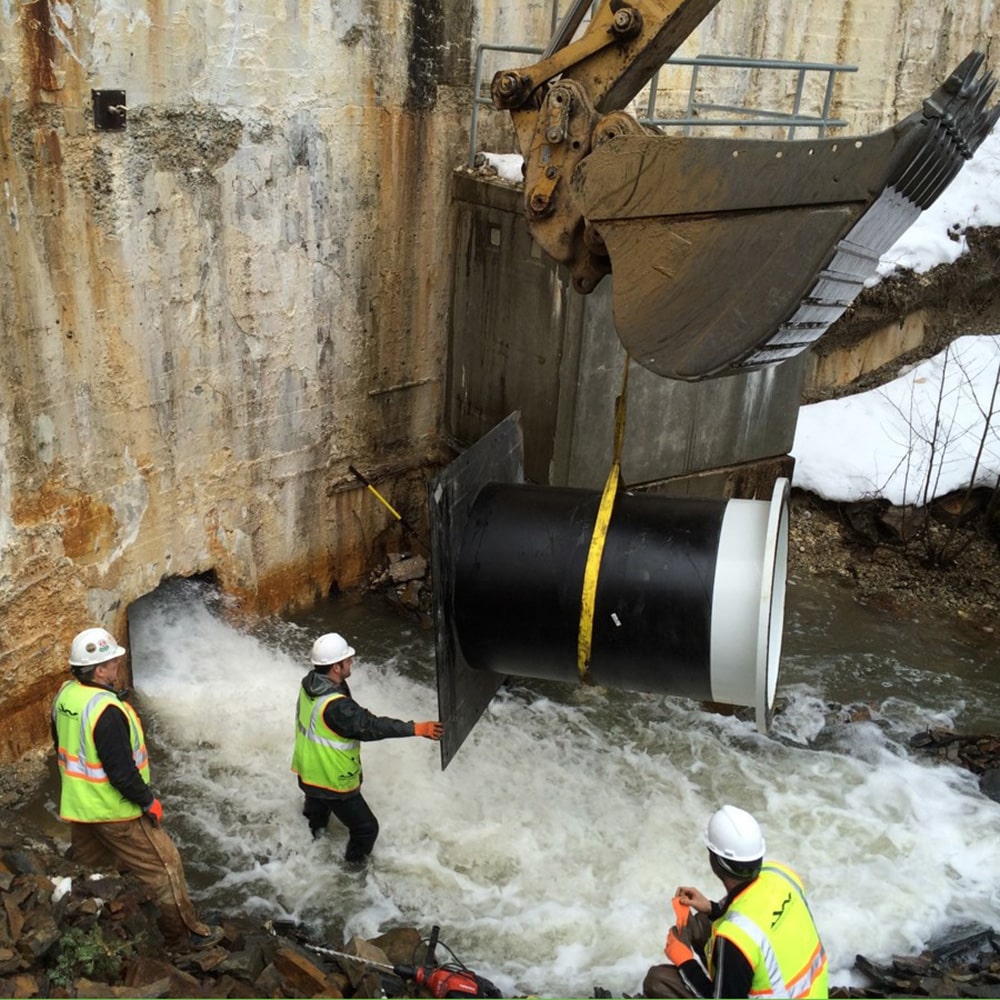
Flower Creek Dam
Using the Old to Build the New
The old Flower Creek Dam was completed in 1946 and was a thin-arch concrete structure that used the compressive forces of the arch and the compressive strength of the bedrock abutments to maintain structural integrity. Prior to construction, a geotechnical investigation revealed a limited amount of competent bedrock, a condition that would not support the same kind of structure as current dam-safety standards. As a result, Morrison-Maierle created an entirely different design that accommodated the lack of competent bedrock in the abutments and concrete samples of the previous dam that showed excessive hydration causing them to fall apart upon extraction. As a result, the new dam design included mass-concrete elements that relied on the sheer volume of concrete to resist sliding, overturn, and uplift forces.
Morrison-Maierle also developed a strategy to save the city a significant amount of money while building the new dam. In today’s projects, a large cost of replacing dams is the construction of cofferdams, typically on both the upstream and downstream sides of the project. The geotechnical investigation of this project showed that there was sufficient bedrock immediately downstream of the old dam. This allowed the design to incorporate the old dam as the upstream cofferdam which eliminated the need for a downstream cofferdam. After the project was completed, the old dam was then dismantled prior to filling the reservoir.
The city staff is able to control the level of the Flower Creek Reservoir by operating a single 36-inch outlet valve. This allows them to keep minimal flows going over the primary spillway while allowing higher cold-water flows to pass through the dam. This meets regulatory requirements for downstream fish habitats and provides a simplified operation for the owner.
Services & Highlights
-
Dam engineering design
-
Hydrology and hydraulics
-
Investigation and coordination for studies
-
Grant and loan funding assistance and coordination
-
Project inspection
-
Project oversight
-
Construction and project closeout assistance
-
Applying and assistance for federal, state, county, and local permits
In addition, the new Flower Creek Dam was constructed primarily of locally available materials (cement, sand, aggregate, rip-rap) that were designed to provide a low-maintenance and long-service-life structure. The operation and maintenance costs of the new dam remain unchanged from those of the old dam, which allows the owner to maintain costs at pre-project levels.
Temperature and Working at Night
Due to the dam’s remote location, the contractor set up a mobile concrete batch plant and produced concrete adjacent to the construction site. This required the contractor to work within various constraints regarding concrete temperature, production rates, placement times and methods, and water supply. A majority of the mass concrete was placed during the summer, which required the contractor to use a chiller to produce 40˚ degree Fahrenheit concrete mix water. The contractor maintained sprinklers on the sand and aggregate during the day to allow the materials to cool through conduction and evaporation. Concrete production typically began around 11 p.m., with the contractor producing and placing concrete until 9 a.m. In addition to working at night and through the summer, the project survived two floods during construction.
Funding Strategy
The Flower Creek Dam Replacement Project received grant and loan funding through multiple federal, state, and local agencies. The primary funding agency was the United States Department of Agriculture – Rural Development. Other funding agencies included the Montana Department of Commerce Treasure State Endowment Program, the Community Development Block Grant Program, the Montana Department of Natural Resources and Conservation – Renewable Resources Grant Program, and local funding by the City of Libby. The Flower Creek Dam Replacement Project represents a significant financial investment for a community of only 2,600 people. The total of all funding mechanisms for this project resulted in a grant/loan share of 55% grant funds and 45% loans, which made the project more affordable for the community.



Related Projects

Allendale Canal and Fish Screen
Allendale Canal and Fish Screen is part of the Flint Creek Water Project, owned by the Montana Department of Resources and Conservation (DNRC) and operated by the Flint Creek Water Users Association.

Hauser Dam
The Hauser Dam project required surveying the space and replacing its old horizontally-designed turbine with a new vertically-designed version in the powerhouse that was built in the early 1900s.

Madison Hydroelectric Plant Powerhouse
Morrison-Maierle was the design engineer for the civil improvements to replace the 4 original 100-year old turbine and generator units at the Madison Hydroelectric Plant Powerhouse.